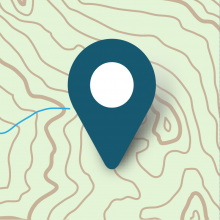
Posted by Linda Davis,
North Country explorer from Smithtown, NY
North Country explorer from Smithtown, NY
June 19, 2013 —
Carcasses of shrimp-like animals are floating alongside my kayak. What are they? Fresh water shrimp?
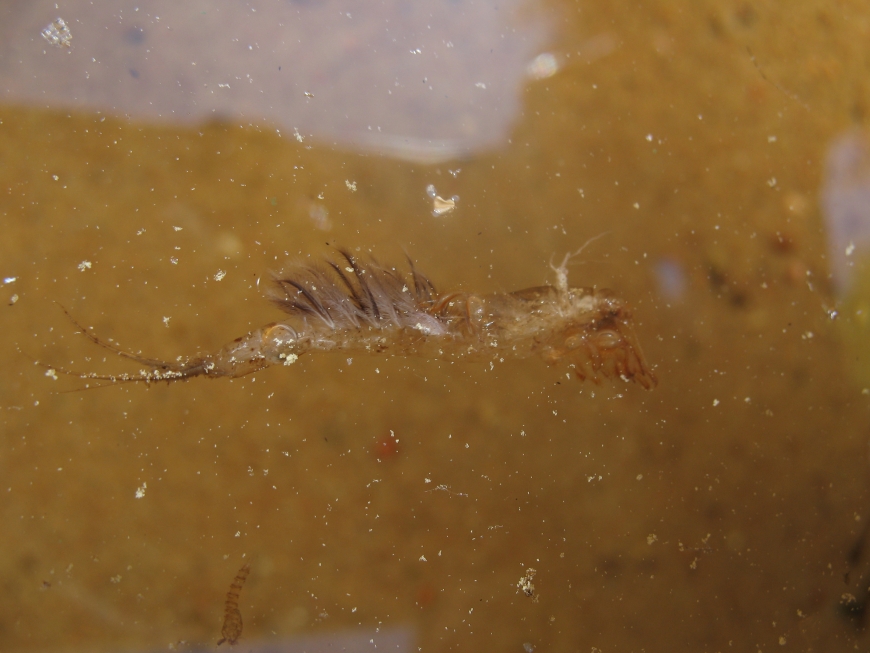
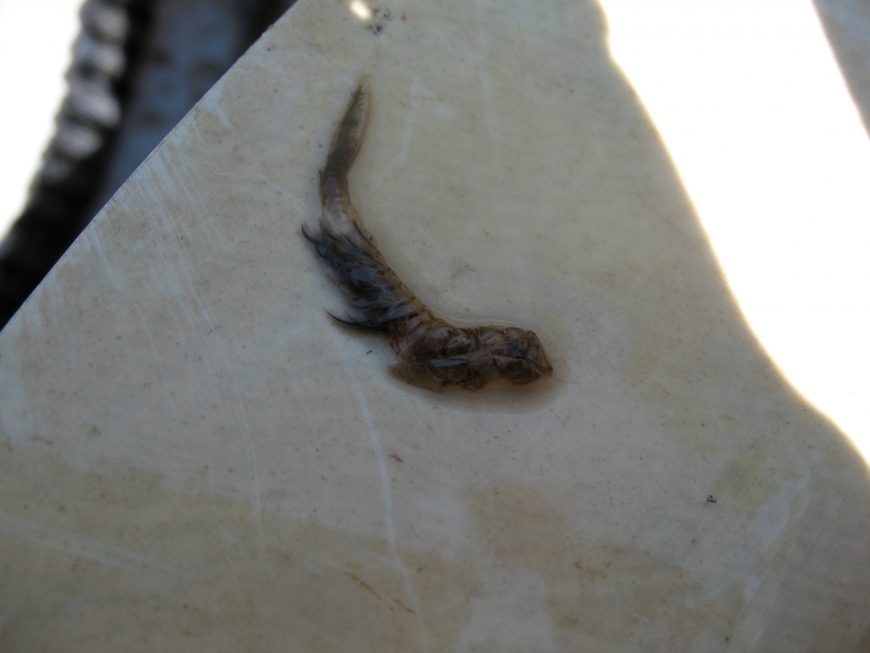
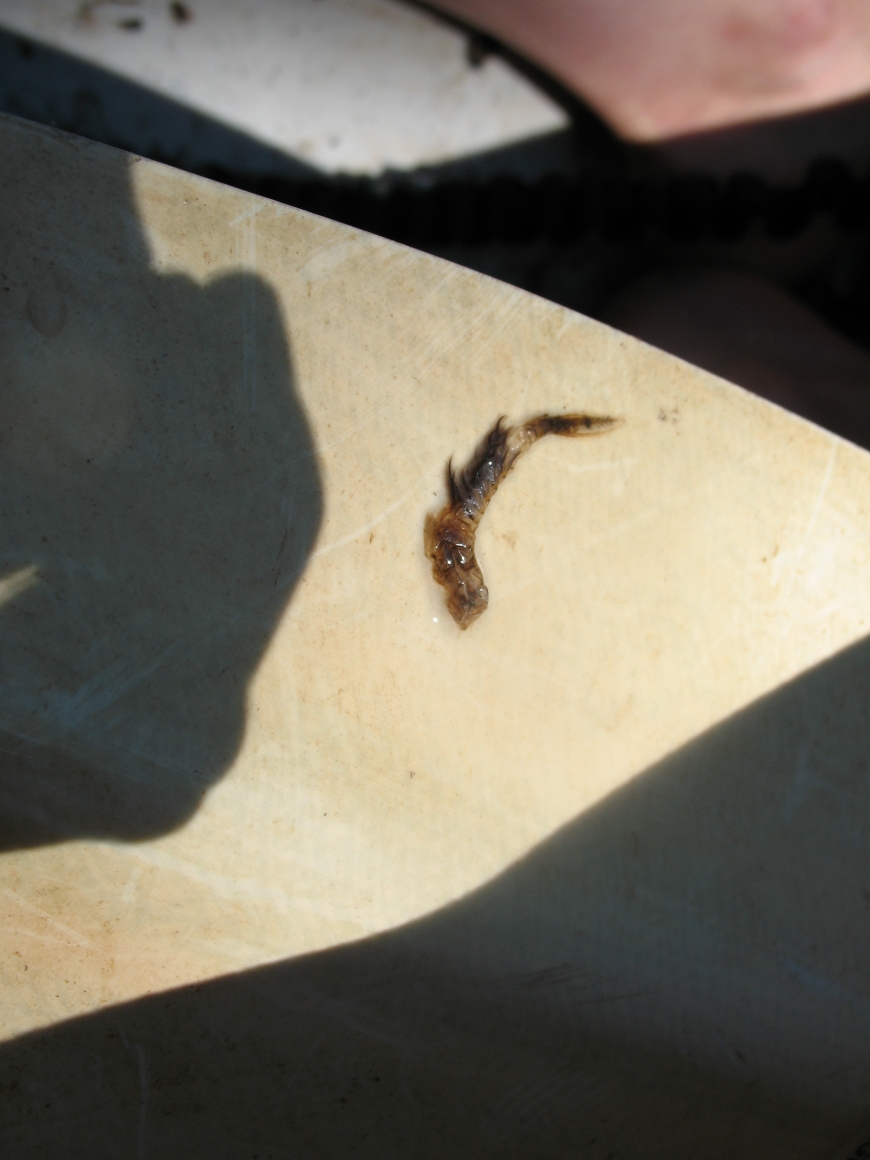
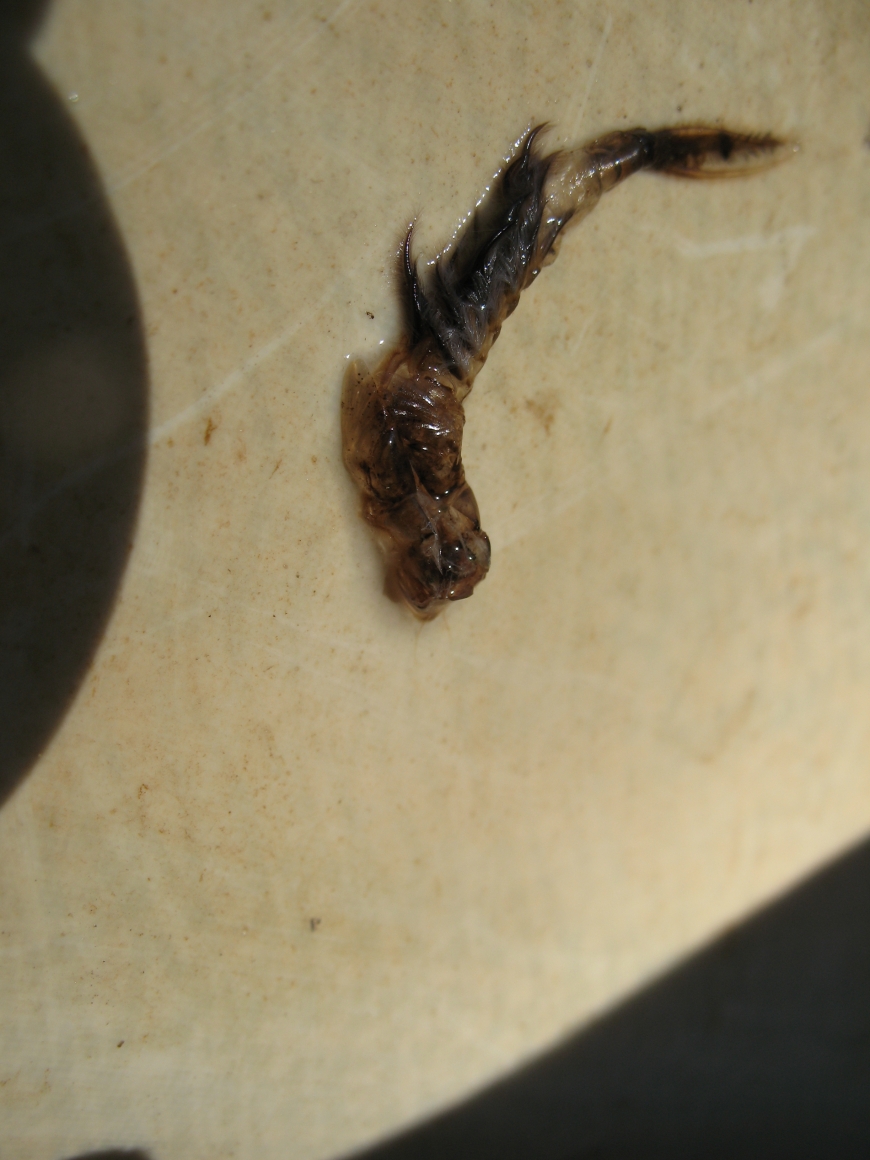





Comments
Linda Davis
Hi, Kendrick. Take a look at the links that Erika Barthelmess and Charlie Davis left. They both think that the carcasses are from Mississippi Grass Shrimp. What do you think?
Posted:
Kendrick Fowler
Hi, Linda. I saw both Erika Barthelmess and Charlie Davis' comments, including the links that they left, and I posted in order to offer a correction; I should probably have been clearer about that. As I mentioned in my first comment, I am quite certain that the objects in your photographs are the exoskeletons of mayfly nymphs, not the carcasses of Mississippi Grass Shrimp. They certainly resemble shrimp, however their abdomens are tipped with three long appendages (called cerci), as found on some insects, instead of the broad appendages (called uropods) that a shrimp would have. It is also possible to see wing pads in some of your images, a feature that some insects possess and all crustaceans lack. The exoskeletons can be further identified as those of mayfly nymphs because they possess wing pads, have cerci, and have gills (the long, purplish, feathery structures) along the sides of the abdomen; other aquatic insects lack this combination of characteristics. Unfortunately, there is not enough detail in the pictures to identify the insects to family, however there are only a few mayfly families with feathery gills, like the creature in your picture has. It is possible to rule out two of those families because they do not occur in northeastern North America; that leaves the Potamanthidae, Polymitarcyidae, and Ephemeridae as possibilities. I think that your specimen probably belongs to one of the latter two families based on its overall proportions, and also because the only genus in the Potamanthidae has a flattened body, which does not appear to be true of your specimen. I will admit, however, that I feel a little reluctant about assessing proportions from photographs of an exoskeleton. In case you are interested, here are a few more resources:
Posted:
Kendrick Fowler
Oops…I hit the wrong button. Here are the resources; I can't seem to find a way to make them appear on individual lines, so my apologies if the links are hard to distinguish…...Shrimp anatomy: ; ; (scroll down several pages; also includes information on the Mississippi Grass Shrimp, if that interests you)…...Mayfly nymph anatomy: (scroll down to the 2nd slide)…...Mayfly nymph identification (unfortunately not designed for northern New York, but containing good information and pictures of the three families I mentioned): ; ; ......I'm sure that you could find more resources if you so desired; I thought that these stood out for their quality and/or clarity. There are also some good print resources, though I do not know how easy they would be for you to track down and use. I used the 4th edition of "An Introduction to the Aquatic Insects of North America," edited by R. W. Merritt, K. W. Cummins, and M. B. Berg, as a reference in writing my previous comment. Hope that helps, and my apologies for any miscommunication earlier! Enjoy your Thanksgiving! --Kenny Fowler
Posted:
Linda Davis
Thanks for the detailed response and the interesting links. I can't wait until next summer when I'll be up at Higley and can collect more of the exoskeletons and take a closer look. All the best--Linda Davis
Posted: